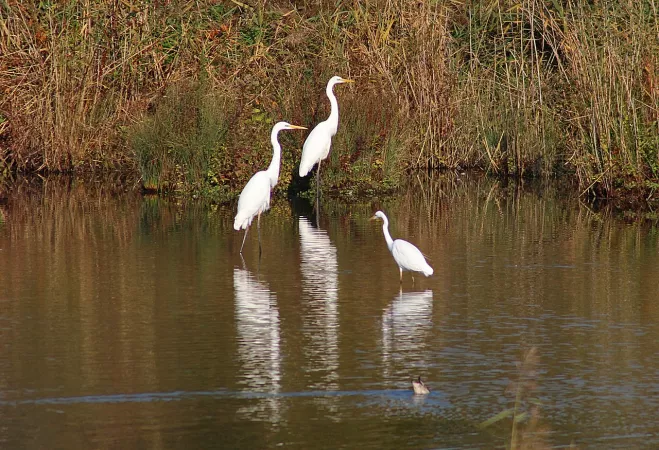
Askot Sanctuary
Duration
2 to 4 Days
2 to 4 Days
Best time to visit
Apr-Jun, Oct-Nov
Apr-Jun, Oct-Nov
Theme
Wildlife
Wildlife
Askot Sanctuary Travel Guide
Askot Sanctuary, located in the Pithoragarh district of Uttarakhand, India, is a hidden gem for nature lovers and wildlife enthusiasts. This sanctuary is renowned for its diverse flora and fauna, offering a unique opportunity to explore the Himalayan wilderness.
Top Attractions in Askot Sanctuary
- Scenic Treks through the Himalayan Forests
- Spotting Snow Leopards and Musk Deer
- Visit to the Ancient Askot Fort
- Exploring the Charming Villages of the Region
Askot Sanctuary is Famous for
Its rich biodiversity and the chance to witness endangered species in their natural habitat.
Top Attractions in Askot Sanctuary
- Guided Wildlife Safaris
- Bird Watching in the Himalayan Valleys
- Interaction with Local Communities
What's Great about Travelling to Askot Sanctuary?
- Perfect for nature enthusiasts and wildlife photographers
- Serene and off-the-beaten-path destination
What's Not So Great about Travelling to Askot Sanctuary?
- Limited accommodation options
- Rough terrain and challenging trekking routes
Travel Tips for Askot Sanctuary
- Obtain necessary permits for entry into the sanctuary
- Carry warm clothing and sturdy hiking shoes
- Respect the local wildlife and follow designated trails
Important Askot Sanctuary trip information
- Ideal Duration: 3-5 days
- Best Time to Visit: April to June and September to November
- Nearby Airports and Railway Stations: Pantnagar Airport (250 km) and Kathgodam Railway Station (210 km)
FAQ's on Askot Sanctuary
Q1: What is the best time to visit Askot Sanctuary?
The best time to visit Askot Sanctuary is during the summer months from March to June when the weather is pleasant, and wildlife sightings are more common. Avoid the monsoon season from July to September due to heavy rainfall, which can make trekking difficult. Winter from October to February is also a good time for bird watching and enjoying the snow-capped landscapes.
Q2: Do I need a visa to travel to Askot Sanctuary?
As Askot Sanctuary is located in India, international tourists will need a valid Indian visa to visit. Make sure to check the visa requirements based on your nationality and apply for the appropriate visa before your trip. Some nationalities may be eligible for e-Visa facilities, but it's essential to verify the latest regulations.
Q3: What are the must-visit attractions in Askot Sanctuary?
The must-visit attractions in Askot Sanctuary include the stunning views of the snow-clad peaks of the Himalayas, the diverse flora and fauna in the sanctuary, and the opportunity to spot rare species like the snow leopard. Don't miss exploring the picturesque villages around the sanctuary, such as Askot and Sarmoli, to experience local culture and traditions.
Q4: Is Askot Sanctuary a safe place to travel?
Askot Sanctuary is generally safe for travelers, but it's essential to follow basic safety precautions like staying on designated trails, respecting wildlife, and avoiding isolated areas after dark. It's advisable to check with local authorities or guides for any specific safety concerns and to stay informed about weather conditions, especially during the monsoon season.
Q5: What is the local currency in Askot Sanctuary and can I use credit cards?
The local currency in Askot Sanctuary is the Indian Rupee (INR). While credit cards may be accepted in some hotels or larger establishments, it's recommended to carry cash for smaller purchases and in remote areas. ATMs may not be readily available in the sanctuary, so it's advisable to withdraw cash beforehand in major towns like Pithoragarh.
Q6: What is the local cuisine like in Askot Sanctuary?
The local cuisine in Askot Sanctuary offers a blend of Kumaoni and Garhwali dishes, featuring flavorsome preparations of rice, lentils, and vegetables. Try traditional dishes like Mandua ki Roti, Bhang ki Chutney, and Aloo Ke Gutke for an authentic culinary experience. Be mindful of the spice levels in local food, and inform restaurants of any dietary restrictions. Enjoy the warmth of local hospitality with a cup of Chai (tea) or Buransh (Rhododendron) juice.
Q7: What transportation options are available in Askot Sanctuary?
Transportation options in Askot Sanctuary include public buses, shared jeeps, and private taxis for getting around the sanctuary and nearby areas. For exploring remote villages or wildlife reserves, guided tours or trekking are popular choices. Car rentals are available in larger towns like Pithoragarh for more flexibility in traveling. It's advisable to check the road conditions and weather forecasts before embarking on any journeys.
Q8: Are there any cultural norms or etiquette I should be aware of when visiting Askot Sanctuary?
When visiting Askot Sanctuary, it's essential to respect the local culture and customs. Dress modestly, especially when visiting religious sites or interacting with locals. Seek permission before taking photographs of people or their property, and be mindful of wildlife conservation efforts by following designated trails and guidelines. Greet locals with a polite "Namaste" and be open to learning about the traditions and practices of the Kumaoni and Garhwali communities. Avoid littering and support sustainable tourism initiatives to preserve the natural beauty of the sanctuary.
Q9: I am a travel agent. How can I buy travel leads of Askot Sanctuary?
Register yourself as a travel agent at agents.tripclap.com and then you can buy travel leads to Askot Sanctuary once your account is approved. For more details contact our support team at +91-8069186564 or support@tripclap.com
